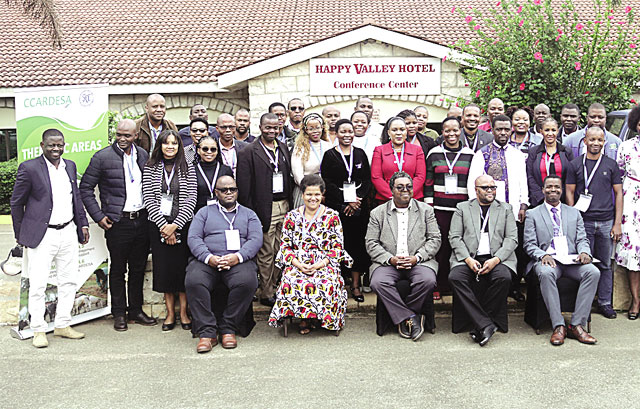By Kholwaphi Mdziniso | 2020-01-28

When working with a team, it is important to ensure that all the team members know and understand what is it that they are doing in the organisation and why they are doing it.
When people do not understand, they hold back their talents and abilities. When people know or understand what they are doing and why they are doing it, they exert their energy towards fulfilling the agenda on the table.
However, the opposite is true, if the team does not understand what they are doing and why, they tend to hang around at times pretending that they are working. Hence, it is important that a leader communicates with the team what they are doing and what.
A key element of leadership is the ability to have a vision. The vision is the big picture and the future of the organisation.
When speaking on a vision, Morgan N. (2014) cites that, a vision is an inspirational description of where the leader would like to take the organisation. It is the future destination of the organizationvision.
No leader can fulfill a vision on his/her own, the vision bearer needs followers that will come on board and work to fulfil the vision. It is essential (for any vision bearer) to communication clearly the vision and align the people to the vision.
Having a clear vision can give a team direction and inspiration and be the foundation for goal setting and action planning. But, if the leader choose to create a vision on his or her own, they often find themselves trying hard to persuade, inspire, and influence others to come on board. This approach takes a lot of time for the ‘buy-in’ phase from others. Many teammates may end up being more compliant than committed.
Developing a shared vision
The team leaders is responsible for engaging the team members in the vision. The key objectives is to energise the team, gain their commitment, and provide direction and understanding of where they fit in the big picture. However, the best option is to consider getting team members to be involved in the creation process of the vision.
The advantages of involving others in the creation of a vision are a greater degree of commitment, engagement, and diversity of thought. The disadvantage is that it takes more time up front and can be muddled.
Drawing the vision, engaging the team
n Decide who should be involved. In many cases, this may just be your team members (employees). In other cases, project team members and other key stakeholders might add valuable ideas and contribute crafting and implementing the vision.
n Schedule joint working times. Schedule at least a half-day, or a full-day off-site locations where you can seat with your team without interruptions and get the people talking on what future they see of the organisation. If there is money to spend you can engage a third party and that is assign a neutral facilitator to stimulate engagement. This will take the focus off of you and also allow a third party to engage all team members.
n Get prepared in advance. Schedule the meeting far enough ahead of time to prepare properly and allow those that will be engaged think through in preparation of the reflection exercise. Establish the expectation that preparation is a must in order to participate and follow-up on team members that will be part of the think tank. Once the vision has been crafted, the leaders has to aggressively engage all team members on the vision.
n Engage the team on the vision. It is the responsibility of the leader to engage the group by communicating with all employees the desired future state of the organisation. Often lower level employees do not get involved in planning meetings. It then becomes essential to engage them by communicating decisions and aspirations of the organisation adopted by the senior staff and board members.
After communicating the vision, it is imperative that the leader tells team members how they will be engaged in the different business processes. It is good to speak with all the people at once so to enhance buy in.
Often leaders tend to develop the vision with senior staff, then sent memos telling employees about the vision yet it will make more sense to speak to the people and allow them to engage and exchange view so that they understand, often team members are left in the dark guessing which is what and often missing the actual mark.
Communicating the vision enable employees know from which page they have to sing from. In fact, team members and colleagues become more involved when a leader speak to them on the vision and that is adopting a shared approach in creating and communicating the vision.
share story
Post Your Comments Below

SOCCER - LIVING on borrowed time!
For the first time in history of local football, two of...

BEAUTY Pageant Eswatini Chairman, Sandra Ismail, officially passed over the Miss Eswatini title t...

Eswatini along with many other African nations is under scrutiny for failing to meet its commitme...

Status Capital Building Society shareholders are once again being asked to take part in an audaci...
All material © Swazi Observer. Material may not be published or reproduced in any form without prior written permission.
Design by Real Image Internet